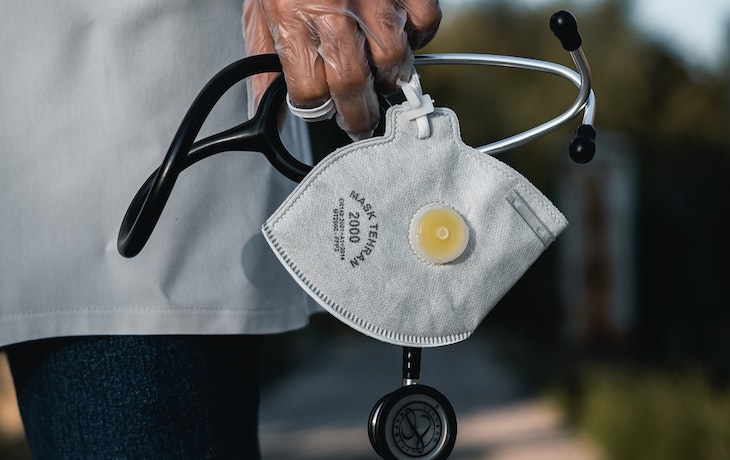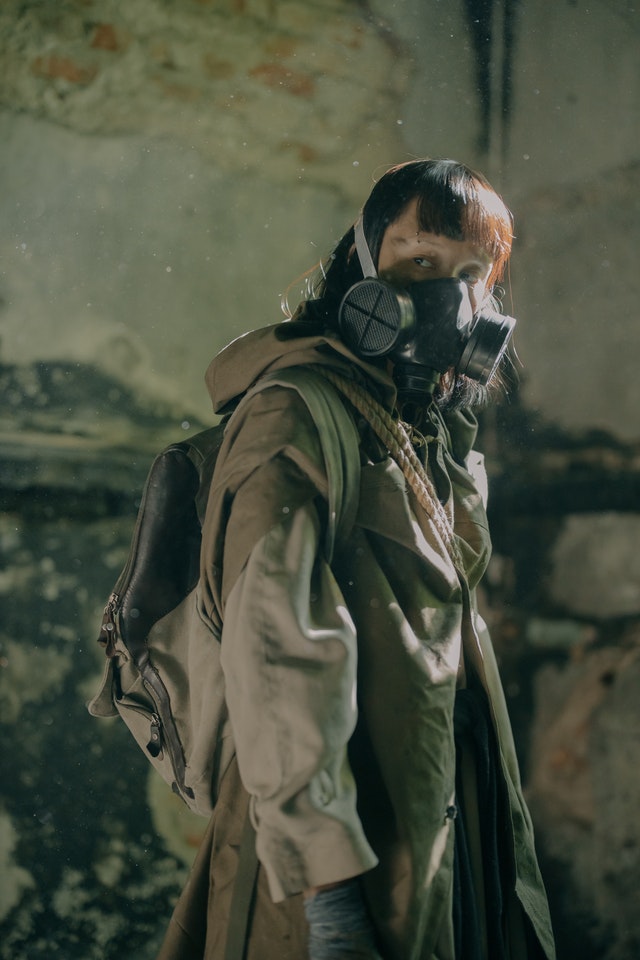We’re all tired of social distancing, masks, and an overabundance of sanitation. Unfortunately, a new wave of COVID-19 mutations appear to be far more transmissible, and it is possible that variants will emerge for which existing antibodies or vaccines may not give the same protection they do against the currently prevalent strains.
Many people have been asking us if they need to do anything differently because of these new mutations. The short answer: not really, although the health experts we talk to have been personally more careful — namely wearing N95 respirators instead of cloth masks and avoiding public places even more.
Here’s what you need to know:
- New COVID-19 mutations appear to be more contagious, and they might resist the existing vaccines/immunity. We know the mutations exist, but it’s still in the early stages of data gathering.
- It’s possible that we’ll see more variants over time, and some of those might be even worse.
- Experts still hope for the pandemic to be over by the end of 2021, but prepare for things to get worse before they get better.
- If these mutations start to win out over the main type, as we’re starting to see in the UK and Ireland and the CDC expects to happen in the US in March, it’s safe to assume governments will re-up lockdowns and other measures to flatten the curve.
- For example, Germany has started requiring proper respirators instead of plain masks because of these new variants.
- So if you’re worried about locking down or other supplies, it’s not crazy to prepare now.
What could new variants do to change COVID-19?
There are three classes of COVID-19 variant to be concerned about that would change the course of the pandemic in ways you might have to prepare for, relative to the ‘wild type’ COVID-19 we’ve all gotten to know and love over the last year. They are:
- More transmissible variants, which would be more contagious than the wild type, such as the “UK variant” you may have heard about, B.1.1.7, and the so-called “California variant,” CAL.20C.
- More severe variants with higher death rates, a longer period of being sick, or more severe long term effects. So far, none of these have appeared yet.
- An “escape variant,” which would reduce the efficacy of vaccines, therapies, and convalescent immunity against the wild type, either partially or wholly. There is some evidence to suggest that the “South African variant,” 501Y.V2, may be resistant to antibody neutralization, but an in-vitro study by vaccine manufacturers hasn’t come to the same conclusion. A new P.1 variant from Brazil also has similar properties. Chances are, even if 501Y.V2 and P.1. reduce vaccine effectiveness somewhat, the vaccine would still be highly effective.
What kinds of variants have we seen?
The key thing to know about all the new variants, including B.1.1.7 and others, is that we have now seen several more transmissible variants. It’s not a one-off isolated thing.
Last year we covered the D614G variant, which was the earliest candidate for a major more-transmissible variant, but appears not to have turned into much.
But in the last two months, multiple such variants, many carrying the N501Y spike mutation, have been rising in prevalence after separate origins at points around the globe. Scientists are increasingly confident they are actually more transmissible. In particular, estimates on the B.1.1.7 strain from the UK suggest it is 70% more transmissible than the wild type. The good news is that the Pfizer-BioNTech vaccine appears to work against B.1.1.7, however, a report from Cambridge’s Gupta Lab suggests that it is slightly less effective.
However, we have not yet seen similarly-strong evidence for more severe variants or escape variants. New variants are constantly being tested for escape properties — think of this as “how likely the mutation will screw up the current immunization plans” — in both academic and industrial labs.
So far, smoking gun evidence has not been found in any case, although this could change at any time. Variants with large increases in severity are considered less likely to emerge by most experts.
But there are worrying reports from South Africa about the 501Y.V2 variant there. In one study performed by the National Institute for Communicable Diseases (South Africa’s CDC), they found that existing COVID-19 antibodies did not neutralize the new variant in 21 out of 44 blood samples. However, that study has yet to be peer-reviewed, and even so, results in the lab may not translate into an escape variant in the real world.
The P.1 strain is causing a COVID-19 surge in an area of Brazil that probably already had herd immunity, an indication that it probably escapes from natural immunity. Data on whether this strain escapes from vaccines should be forthcoming, but experts seem to be saying the results will be similar to the results on 501Y.V2, which carries the same two spike mutations and doesn’t appear to escape current vaccines very well.
Here is a set of maps to help you track the new variants.
What would new variants mean?
More-transmissible variants have the surface-level effect that any particular case of the new variant is more likely to infect you if you’re around it. But they have a longer-term effect that expands exponentially: they spread faster than the wild type, and over the course of time come to dominate the outbreak wherever they are present.
Once this happens, such a strain is more likely to run riot even with precautions in place that would control the main wild type.
This has already happened in the UK and Ireland, where transmissible variants have driven huge surges in COVID-19 cases and prompted stricter precautions. And according to the CDC, these variants are likely to form the controlling portion of the US caseload in March, an estimate which comes with considerable uncertainty because both their current prevalence and degree of selective advantage are not well bracketed. Some reports out of California suggest that the outbreak there may already be controlled by a new more transmissible strain.
More-severe variants cause more-serious illness where they are present, but unless they also come with a selective advantage, are unlikely to dominate the pandemic even if they emerged at this late hour.
Escape variants could be the worst of all, making reinfection more likely and decreasing the effectiveness of vaccines, thereby increasing the numbers of people who would have to be infected or vaccinated to reach herd immunity.
If such escape variants were strong enough, they could completely negate both convalescent immunity and current vaccines, and necessitate new vaccines in order to control them. In the worst, worst, worst-case scenario, this could mean that new strains of deadly coronaviruses would be circulating around the world on an ongoing basis for the foreseeable future, requiring new vaccines all the time. This would be similar to the vaccine situation with seasonal flus, but this nightmare scenario is considered less likely by many experts due to the lower mutational rate of coronaviruses compared to flu viruses.
What you can do to prep
If you’ve already been social distancing, staying home as much as possible, wearing masks, and disinfecting hands and surfaces… great, keep doing that! If you haven’t, now is the time to start.
In fact, you really should be doubling down on whatever you’ve been doing. If you’ve loosened up a bit over the past year, now is the time to tighten down again. If you’ve been wearing cloth masks, it’s time to upgrade to an N95 respirator. The German government is already requiring so-called “clinical masks,” and France is considering a similar rule. Austria and Bavaria both now require disposable respirators in public.
If you’re still shopping in stores, now is a good time to consider alternatives. Many large chains have adopted curbside pickup. Even when taking advantage of curbside service or drive-through windows, take precautions like masking, use of hand sanitizer, and disinfection of surfaces when possible.
- How to shop for groceries during COVID-19
- How to gas up without catching COVID-19 at the pump
- Getting takeout from a restaurant without catching COVID-19
It’s unknown if contaminated surfaces are a bigger threat with these new variants. While surface contamination has never been the primary concern with the main disease, doctors and scientists have never ruled them out as a vector. And with more-transmissible variants, surface contamination may be more of a risk and rise to the level of being more than an afterthought. Refer back to our previous articles on disinfecting surfaces:
- How to disinfect packages from COVID-19
- Fact-checking the CDC’s new guidance: you should still disinfect packages [Updated]
- When killing coronavirus on surfaces, thyme is on your side
- Review: Force of Nature’s DIY at-home disinfectant
- Best no-touch keychain tool
And most importantly, you should keep the possibility of worst-case scenarios in mind as you prepare yourself mentally, make decisions about your lifestyle, and plan your preps.
The relatively optimistic scenario where the United States gets control of the pandemic by Summer 2021 may still be the most likely scenario. But transmissible variants may make the spring a grimmer time than would otherwise seem likely, and escape variants may make the pandemic longer than we expect.
You may be in a strict lockdown this spring. You may not be back to normal by the end of the year. We can’t be sure how likely these things are to happen, but they are possible, and you shouldn’t behave as if they aren’t.




You are reporting the comment """ by on